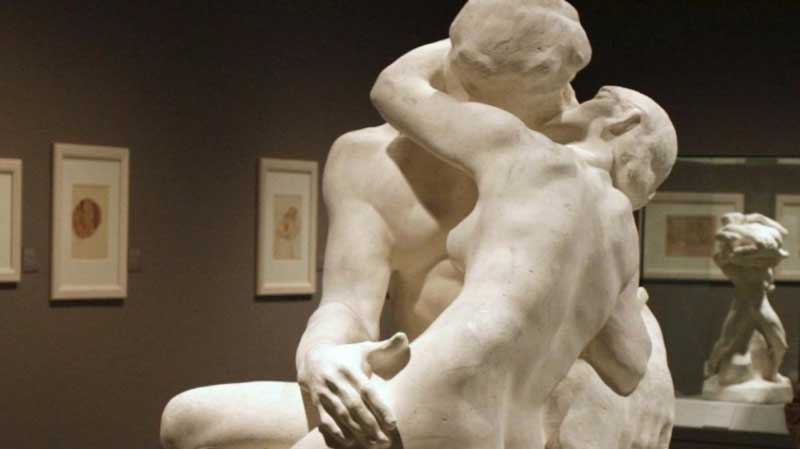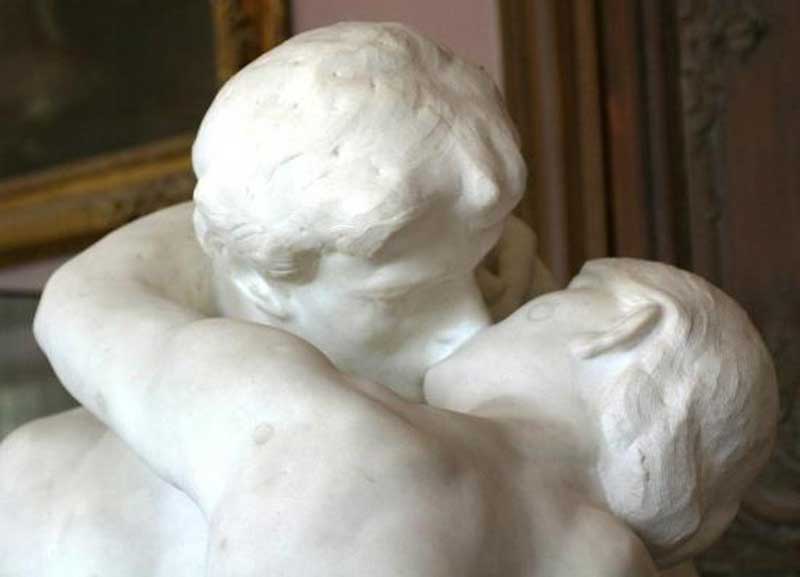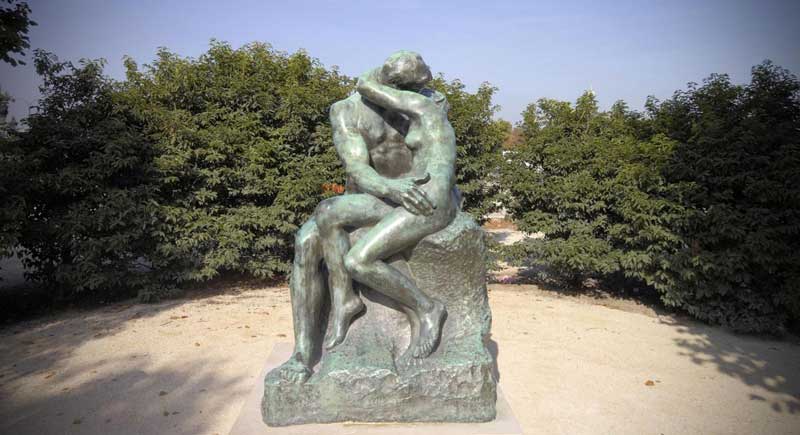
Created by Auguste Rodin and simply known as the ‘Kiss’, the exquisite marble sculpture of two naked lovers fused with passion, is a universal representation of sexual intensity. The sleek and supple bodies of the lovers sitting on the strikingly contrasting roughly chiselled rock seem to be unaware of the world and appear to be timeless and idealized.
According to the original 13th Century legendary story, Francesca de Rimini and Paolo Malatesta fell for one another as they sat reading tales of courtly love. However, Francesca was married to Paolo’s brother Giovanni and when the husband discovered them in the compromising position, he stabbed them to death. In his sculpture, Rodin depicted the lovers at the moment of their first kiss, the moment of ecstasy, with the book slipping from the man’s left hand. The Kiss by Rodin, is not provocative, it is a tasteful rendition of desire, not an orgasm. Its fusion of eroticism and idealism makes it an iconic image of love.

However, the Kiss is only a single part of the master artist’s huge compositional piece, for a proposed entrance way for the Musée des Arts Décoratifs in Paris. In 1880, Rodin was commissioned for the first time by the French state to design a pair of monumental bronze doors for a new museum of decorative arts. While accepting the proposal, Rodin planned a huge piece, known as the ‘Gates of Hell’ and decided to base it on the 16th century long, narrative and epic poem, the Divine Comedy by Dante Alighieri.
He also planned to sculpt a pair of lovers in relief in the middle of the left-hand door panel. Called Faith, the group would represent the illicit passion of Paolo and Francesca, whom Dante met in the second circle of hell and were a popular subject in 19th Century art.

Unfortunately, the Gates of Hell were not cast in bronze until after the death of the master sculptor and the Kiss stood unfinished in Rodin’s studio. Though in 1888, the French government ordered the first large-scale marble version of the Kiss from Rodin for the 1889 Exposition universelle, but it was publicly displayed for the first time in 1898, when Rodin decided to exhibit it at the annual Salon, along with his monolithic statue of Balzac and immediately the Kiss proved a hit with the public. It was immediately copied in bronze in various sizes and more than 300 casts had appeared by 1917.

Three huge size marble versions of the sculpture were executed in Rodin’s lifetime. The earliest one was moved to the Musee du Luxembourg in 1900, before being shifted to the Musee Rodin, in 1918.